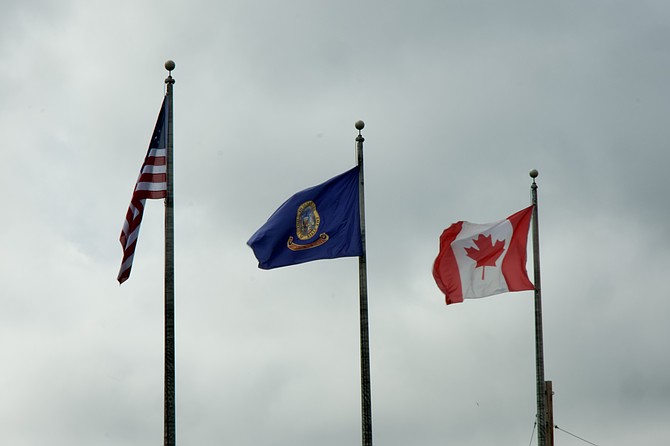Tourism decline threatens bottom line for North Idaho businesses

Bonners Ferry city officials reraised the Canada flag on government property May 6 after establishing a 365-day special occasion recognizing its Canadian neighbors.
With reduced Canadian traffic, campsite closures, and limited U.S. Forest Service staffing, Boundary and Bonner counties are bracing for a slower summer tourism season — something local business owners say will impact their bottom line.
“It appears we will have a challenging summer,” said Tom Turpin, CEO of the Kootenai River Inn and Casino. “From mid-June to mid-September, we typically run at 92 to 95 percent occupancy. But we are seeing a sharp decline in southbound Canadian traffic, and possibly a reduction in northbound traffic as well. It’s showing in our hotel occupancy.”
Passenger vehicle crossings from Canada into Idaho dropped 37% in April compared to last year, according to U.S. Customs and Border Protection. That’s a significant reversal after years of steady improvement following the COVID-19 pandemic.
On June 6, officials from the International Selkirk Loop — a bi-national tourism nonprofit promoting communities around the Selkirk Mountains — sent a letter to federal lawmakers in both countries warning of the economic risks to a region deeply reliant on cross-border visitors.
“The letter highlights the significant role tourism plays in sustaining local economies, particularly in rural areas where cross-border visitors support restaurants, lodging, outdoor recreation, and small businesses,” the organization’s board stated in a press release. “[We] urge policymakers to come to a swift and beneficial resolution for the small business owners who depend on border-crossing tourism.”
With fewer customers from Canada, Turpin said the Kootenai River Inn will have to provide creative ways to draw customers, including possibly reduced room rates.
“We have to be conscientious of the time we live in, and it may bode well for consumers,” Turpin said. “Our job is to be strategic about targeting rates and getting customers in our door.”
Fewer Outdoor Opportunities Could Compound Losses
In addition to declining traffic, a drop in available recreational amenities could further impact tourism-related revenue across the Idaho Panhandle.
The closure of Springy Point Recreation Area in Bonner County due to staffing shortages will eliminate public access to the campground and boat launch, which typically draws an estimated 450,000 visitors each year and generates roughly $17 million for the local economy, according to Albeni Falls Dam Natural Resources Chief Taylor Johnson.
“It’s going to be a different summer. Hopefully, it’s just for this year,” Johnson said.
Boat-accessible campgrounds in the Sandpoint and Priest Lake Ranger Districts will also be closed this season after the Forest Service was unable to hire the seasonal boat operators needed to barge service trucks to remote sites.
Staffing shortages are also affecting trail and recreation management across the region. The Bonners Ferry Ranger District saw its trail crew drop from 20 seasonal and youth employees last year to just three permanent seasonal workers this summer, said District Ranger Heather Fuller.
“It’s going to be a challenging summer,” she said. “Until it becomes a human health and safety issue, we’ll try to keep everything open. But I expect we’ll be forced to reduce services at some point.”
The Sandpoint Ranger District is down to just one full-time recreation staff member, according to Brad Smith, director of the Idaho Panhandle Conservation Group.
“Camping is an American pastime, and it’s one of the more affordable options for people who can’t spend money on expensive hotels,” Smith said. “Losing that opportunity affects not just tourists, but local communities and our way of life.”










